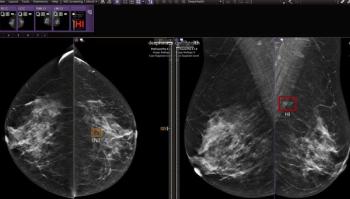
Trauma patients benefit from CT regardless of dose concerns
One of the first proven applications for multislice CT was trauma, a clinical role affirmed by past International Symposia on Multidetector-Row CT and the one going on now in San Francisco. Over the last several years, however, another issue -- patient radiation dose -- has surfaced, calling some MSCT applications into question. Any concerns about radiation dose are vastly outweighed, however, by the benefits of CT when it comes to dealing with trauma patients.
One of the first proven applications for multislice CT was trauma, a clinical role affirmed by past International Symposia on Multidetector-Row CT and the one opening today in San Francisco. Over the last several years, however, another issue -- patient radiation dose -- has surfaced, calling some MSCT applications into question. Any concerns about radiation dose are vastly outweighed, however, by the benefits of CT when it comes to dealing with trauma patients.
"Integration of whole-body CT into early trauma care significantly increased the probability of survival in patients with polytrauma," the authors report in the article. "On the basis of our findings, we recommend that whole-body CT should be integrated into the early resuscitation phase of severely injured patients as a standard and basic diagnostic method."
Huber-Wagner and colleagues used data recorded in the trauma registry of the German Trauma Society to calculate the probability of survival according to the trauma and injury severity score (TRISS), revised injury severity classification (RISC) score, and standardized mortality ratio (SMR), the ratio of recorded to expected mortality. TRISS is the most widely used method for measuring expected outcome in trauma patients. But the recently developed RISC score is even more precise than TRISS.
The study considered data from 4621 patients treated at various German trauma centers. The patients, 73% of whom were men, had a mean age of 42.6 years. Some 32% had been given whole-body CT to assess critical injuries. The researchers found that SMR based on TRISS was 0.745 for patients given whole-body CT versus 1.023 for those given non–whole-body CT.
SMR based on the RISC score was 0.865 for patients given whole-body CT versus 1.034 for those not assessed with such whole-body scans, indicating that the recorded mortality rate for patients given whole-body CT is significantly lower than that predicted with TRISS and RISC score. The relative risk reduction in mortality for whole-body CT was 25% based on TRISS and 13% based on RISC. Data adjustment confirmed whole-body CT as an independent predictor of survival.
Newsletter
Stay at the forefront of radiology with the Diagnostic Imaging newsletter, delivering the latest news, clinical insights, and imaging advancements for today’s radiologists.




























